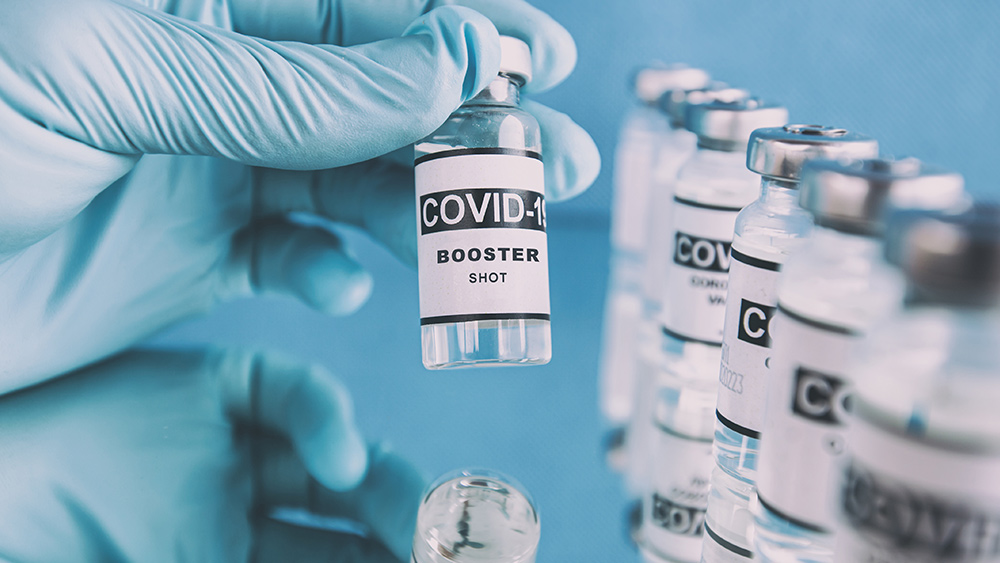ADHD and ADD are FAKE disorders stemming from bad schooling practices, HFCS and artificial food coloring
09/28/2018 / By S.D. Wells

Attention-deficit disorders are defined as brain disorders marked by ongoing patterns of inattention, hyperactivity, and impulsivity, to an extent that it interferes with development and functioning. Symptoms include wandering off task, difficulty sustaining focus, disorganization, defiance, constant movement, fidgeting, tapping, talking, and the inability to delay immediate gratification. Sounds like every adult who’s jacked up on coffee while stuck sitting on a hard chair at some boring work meeting while playing on their smart devices and completely disconnected from the speaker and the content being presented.
Today’s elementary and secondary school curriculum and testing is still based on memorizing rote facts (which are mostly inaccurate), filling in the “blanks,” taking multiple choice quizzes and tests, and raising hands to answer questions posed by the teachers.
Meanwhile, most school breakfasts and lunches (including what most kids bring from home) are chock full of processed foods that contain high fructose corn syrup, artificial coloring, artificial flavoring, concentrated salts, pesticides, and fluoride (think of the water fountains). Children and teens are consuming pop tarts, sugar-laden cereals, soda and energy drinks without knowing the detrimental behavior effects. Plus, kids eat candy throughout the day, some coming from home and the rest from teachers who use genetically modified treats as rewards for “good behavior.” How ironic.
What year did Christopher Columbus arrive in America, and what are the long division steps for dividing 2,437 by 389? Exactly. Who cares.
First off, let’s address what kids are learning in school these days, and how most of the curriculum is cannon fodder, including outdated “skills” and “strategies” that don’t even apply to the real world in any form at all. Unless you’re appearing on the Jeopardy game show, trivia doesn’t matter at all. As for long division, nobody needs to know that dead dinosaur at all. We have computers, smart devices and even watches with calculators now.

Kids don’t engage learning unless they’re engaged in collaboration, creativity, communication, critical thinking, and citizenship (The 5 C’s of 21st century learning).
Rote memory learning drives any human being crazy. Children are brilliant, and no curriculum in the world that’s based on rote memorization, boring worksheets, and taking multiple choice tests will ever keep them quiet, still, and “paying attention” for more than a couple minutes. Students want to know the answers to their questions like, “What does this have to do with the real world?” and “How does this help us get smarter?”
Every single “symptom” of ADHD and ADD is a symptom of poorly planned educational systems, lack of real world connections, and bad diet
In the DSM-IV (The American Psychiatric Association manual and the pages describing diagnostic criteria for Attention Deficit Disorders), any children who can’t pay attention for extended periods of time, who don’t complete their homework, or who are often distracted by “extraneous stimuli” are in need of prescription psyche medications. According to DSM-IV, “symptoms must be present for at least 6 months …” and required to cause “some impairment in at least two settings” for a diagnosis of a brain disorder to be applied. The DSM-V is even worse, and offers no clear guidelines. Well, did the DSM-IV offer any “clear” guidelines? What’s clear is that psychiatrists can now diagnose ANY child or adolescent anytime with ADD or ADHD.
What’s clear is that students need real world education instead of memorizing facts for tests that they completely forget three days later. What’s clear is that science proves that artificial food colorings, soda, and high fructose corn syrup cause severe hypersensitivity reactions, affect behavior, reduce cognition, deplete the retention of information, and cause mental distress. Where’s all that information in the DSM manuals?
15 Million pounds of artificial dyes are put in U.S. foods, drinks, candy, and medicine every year
There has been a 55 percent increase in U.S. toxic food dyes just since the year 2000. There are over 15 million pounds of dyes put in foods, drinks, candy and medicine every year, and the FDA does nothing to protect consumers from the barrage of poison.
Did you know that the industrial-based food dye Yellow #5 affects behavior and induces severe hypersensitivity reactions? Fact: Teenagers who drink more than one large soda (4 glasses) per day experience mental health difficulties, including hyperactivity and mental distress, according to a study recently published in the American Journal of Public Health. Those same soda drinkers also score lower on tests, per the scientific research conducted.
In conclusion, if your child is “suffering” from ADD or ADHD symptoms, before you rush to a medical quack for SSRI drugs that cause severe depression, suicides, and homicidal tendencies, change your child’s diet to organic foods (stop buying school meals all together), and talk to the school’s principals and administrators about engaging the students with some real world curriculum.
Sources for this article include:
Submit a correction >>
Tagged Under:
ADD, add fake, adhd, adhd fake, attention deficit disorder, child health, children, disease causes, DSM, dsm IV, DSM V, food causes hyper, hyper, hyperactivity, inattention, mind body science, nutrition, psychology of hyperactivity, public education, SSRI
This article may contain statements that reflect the opinion of the author





















